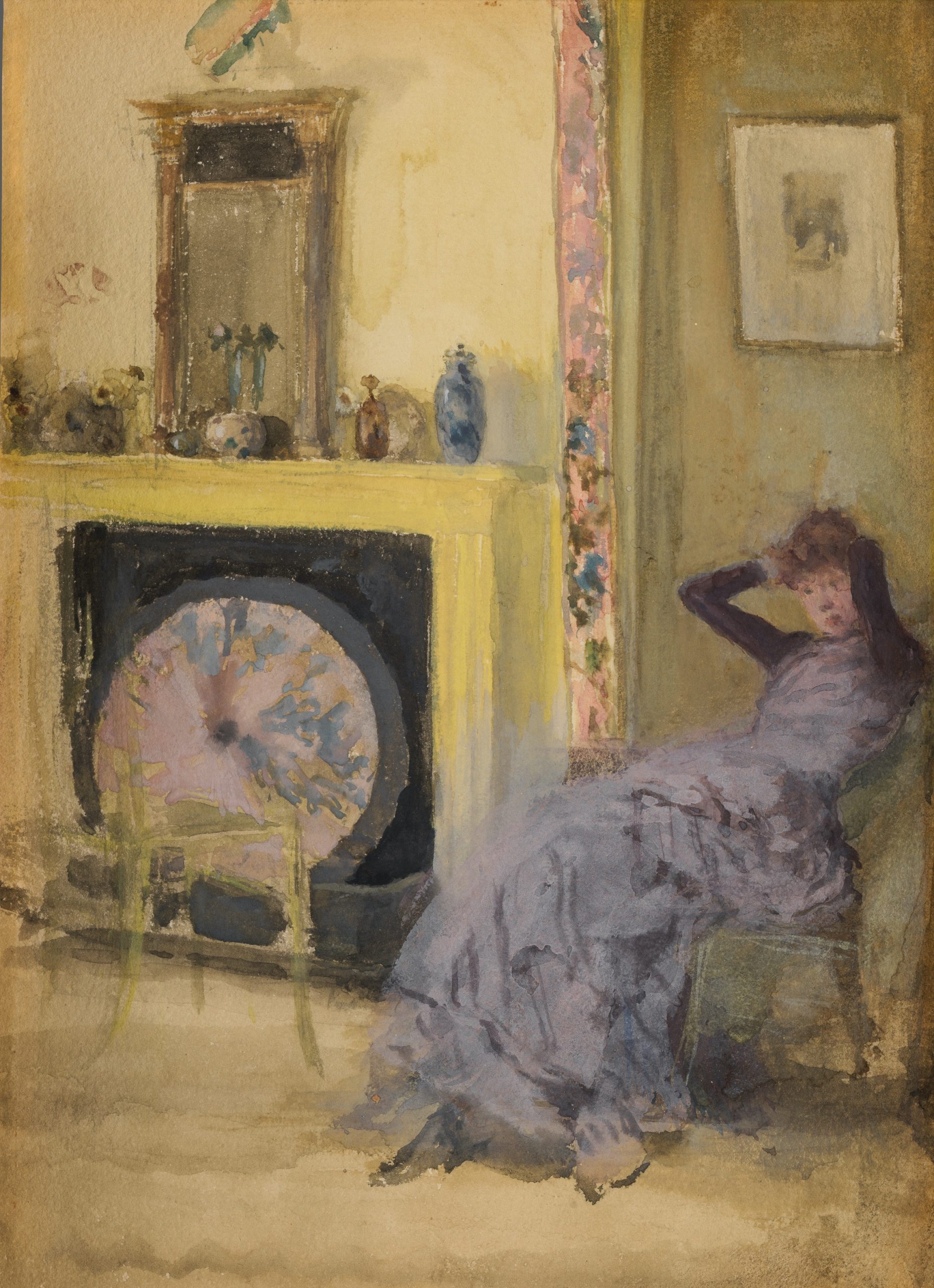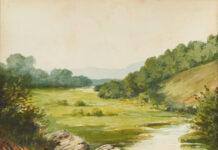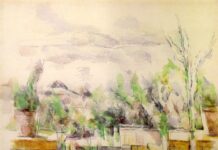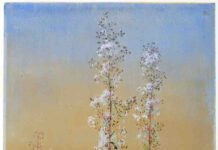
Among Whistler’s most accomplished watercolors, The Yellow Room offers a rare, intimate glimpse into the artist’s personal and professional life in London. The interior scene documents the sitting room of the couple’s home-studio at 13 Tite Street, in Chelsea, innovatively decorated in what the artist’s future biographer Joseph Pennell described as a “scheme of yellow,” and filled with Whistler’s collection of Japanese objets d’art and Aesthetic Movement design. The woman depicted is the artist’s principal model and mistress, Maud Franklin (who posed for more than 60 of his works)
The harmonized interiors of Tite Street, which one friend described as having the effect of “standing inside an egg,” echoed Whistler’s most controversial exhibition — the 1883 “Arrangement in White and Yellow” at London’s Fine Art Society. In these terms, The Yellow Room synthesizes many aspects of Whistler’s most adventurous art and design work in the early 1880s — from the private, informal view of his favorite model and muse at home to his contemporaneous production of avant-garde works on paper and his fastidious decoration of customized spaces for the display of art.







